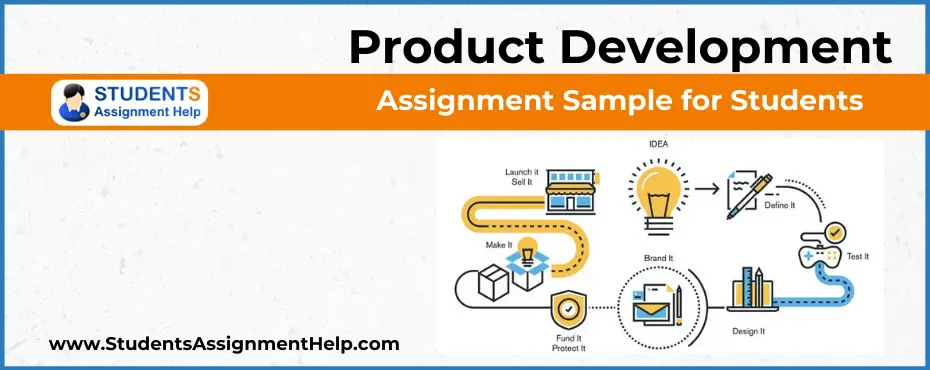Product Development Assignment Sample for Students

Introduction
In an era of technology, most of the products are technology-based. Gadgets have become technologically advanced, smaller and portable. With the increase in portability, electronic products have become easy to carry outside home. Mobile phones, digital camera, tablets and laptops have become a necessary part of day-to-day life of human beings (Papadopoulou, 2011). Battery chargers needed to charge the gadget, however, need a stable electricity source, which is usually home or office (Giachetti, 2013).
The industry of alternative energy is booming at a significant pace. Niche renewable energy sources, such as solar energy in the form of geothermal and concentrated solar power are witnessing a rise (Varadarajan, 2012). Solar energy is one of the major growth areas in the space of renewable resources. With the increasing need of development of renewable energy for electricity purposes, solar power products have started to find a place among products that run through electricity. As per the latest developments, China led to the installment of record 12 GW solar panels in 2013, which makes it the largest solar market in the world. While US and China are leading markets of solar energy development and consumption, other nations all over the world are also focusing on use and application of solar power products (Alternative Energy Stock Outlook – Feb 2014 – Industry Outlook, 2014).
Mobile industry is at booming stage. By 2015, 2 billion people will use smartphone mobile, which is a huge number (2 Billion Smartphone Users By 2015: 83% of Internet Usage From Mobiles, 2014). Mobile phone chargers, thus, become a necessity. Looking at the solar chargers in the market, they use various types of solar panels that range from the panels of inefficient thin film having efficiency of 10 percent or less. However, companies that produce solar chargers with low efficiency surround the solar charger industry. They are not capable of meeting expectations of consumers. In such scenario, the launch of solar charger for mobile phones will help in targeting people with smartphone users.
Product
Description and specification:
Solarz is the name of the solar charger which is an environment-friendly product. It works in a very simple manner of absorbing solar energy, conversion into electrical energy and storage into the lithium battery. The voltage output element releases electrical energy. The product needs to be exposed to the sun for long hours so that it can accumulate sufficient energy into its lithium battery. Once charged, it can be used for charging even in the night as it uses absorbed solar energy present in the battery. Solarz is meant for travelers, mobile phone users and those who remain out of home for a long time, such as sports people. The product is needed because of the problems people face when they are out of home and cannot charge gadgets they carry, such as mobile phones, digital camera and MP3 players. As Solarz uses solar energy, it is an environmental friendly product and will prove to be extremely convenient to those who spend a significant amount of time in the sun. It is needed to address the problem of gadgets getting out of battery at any time.
Idea generation process:
The process of idea generation is the act of generation of applicable and novel ideas and is associated with the frequent problem solving. It is a crucial step in a new product development (Paulus & Yang, 2000). As per the stages of New Product Development given by Booz, Allen and Hamilton (1982), idea generation refers to search for product ideas that can meet the objectives of the company (Bhuiyan, 2011). Customer-focused idea generation is a critical success factor in the idea generation (Gordon, Weilbaker, Ridnour & Judson, 2008).
The idea of solar charger came from the formal research through secondary data available on the internet. From customer feedbacks in secondary resources, it is identified that travelers and sports people face problems of charging their gadgets as they remain outside home for a long time. Mobile phone market is witnessing significant growth. The need for charging the battery is needed anywhere and anytime. In the situation of unpredictable supply of grid power and availability of abundant solar power for travelers and sports people, the idea of solar charger is generated (Varadarajan, 2012).
Concept testing:
The concept testing is another important step in the development of new product. In this stage, concepts of new product are tested within a group of target customers for finding out whether the product has high customer appeal (Amue & Adiele, 2012). After the generation of idea of developing a product that can use solar power for charging cell phones, the product idea was tested among a group of 20 individuals. Responses of individuals explained that they needed a product that can be able to give power to batteries of gadgets they usually carry such as digital camera, mobile phones and MP3 players. They also showed an interest towards the use of environment-friendly products. Thus, the product was modified to make it adaptable for frequently used gadgets.
Business Analysis
Key strategic decisions such as alliances: As Solarz promises to charge the mobile phones and similar other gadgets, it will be launched with a strategic alliance with local mobile manufacturer. The alliance will be aimed at co-branding their product with solar charger so that they can ensure customers a steady power, even in offshore locations and remote areas. Strategic alliance is an important decision to be made in new product development and business plan. It is essential to choose the correct partner so that it can make a product launch successful (Herring, Jones & Bailey, 2009).
Time:
The time taken to develop a product is as follows: Initially, concept development, business plan and fund seeking will take place in 4 months. Second step is the formation. It includes completing all legal formalities, recruitment of sales and engineering team that will take three months. Next is the testing program and market research, which will take six months. Initial sales will take three months. Product launch through development of effective customer service program will take two months. Promotional strategies and marketing plan will be made for one year.
Final step of optimization of efficiency and broadcasting feedback and results will take three months. Thus, thorough research and development analysis will help in tracking the progress of the product. It will give sufficient time to market as well as develop the new innovative product line (Tzokas, Hultink & Hart, 2004).
Risk:
Since the potential for returns of the product is great for Solarz if it becomes successful in the market, the risk associated with the product is high. Use of solar energy in products is an emerging technology. For the business venture in particular, crucial uncertainties are related to finance and market. Since the potential partners for the venture are mobile manufacturing companies, they can be tight in fund provision for investment in the technology whose benefit remains uncertain. Since the product is relatively cheaper than the wired power industry products, it will become essential to convince the partners that the set price of $40 and $60 remains to be as it is until the market becomes well-established among consumers.
It is necessary to keep prices low so that customers can be attracted at the initial level. In today’s market, money is spent on systems that are efficient in terms of functioning and contributing to the development of alternative energy solutions in future (Alternative Energy Stock Outlook – Feb 2014 – Industry Outlook, 2014). Solarz meet the criterion. Furthermore, strategic alliance with target partners will help in avoiding additional expenditure on branding own name as consumers will continue to purchase the products from the established partners in the mobile phone field (Singh, 2012).
Expected benefits:
Expected benefits include improvements in the method of energy efficiency and carbon neutrality when wired mobile phone chargers are replaced with solar charger technology. As the venture has the potential for high returns, investors can see the expected benefits in terms of increase in their reputation for giving an offering that is environment-friendly. The easy-to-use design will help in making the product popular and reachable to a large number of mobile phone users.
Size and potential of the market:
Solarz will be initially launched in Australia. The potential of the market is vast due to a large number of cell phone users, travelers in the country and sports activities (Sport and Physical Recreation, 2012).
The Return on Investment is one of the most critical aspects that are connected with the launch of any new product or technology. ROI will be measured by using measures for consumer acceptance. The evaluation of ROI also includes the percent of market share attained in the set lifetime value of the customer and customer satisfaction over the period. The net present value will be calculated by taking into account average annual revenue per customer, average gross profit margin before marketing expenditure, cost of capital and average number of years a customer is held. The cost of capital is the factor that reflects the time/value for money (Goldsmith, 2012). Estimated values for ROI are presented below:
The venture expects to earn $100000 in average annual revenue from clients after breakeven. The average gross margin before marketing expense will be 40 percent. The cost of capital is 12 percent. The average customer relationship is expected to last for four years. The NPV is then approximately $120000. The marketing budget can be set to $200000. The venture can spend $10000 on selling promotional discounts at point of sales. With $120000 as customer value, the new product can be given at rebates at 12 POS before winning one customer. If they can win one customer at one POS, it will turn up to net profit of $110000 win over the lifetime of the end user of Solarz. Thus, it is essential to do a major amount of investment in marketing and selling of the product as Solarz is the new product and requires a spread of awareness in the target market.
Cost of production and breakeven: The cost of production will not be high as the materials used in making the solar charger are not expensive. Raw material costs will be 50% of the selling price of the product, and other expenses cost will be 45% of product selling price. Branded players charger is priced between $20-$30 while unorganized sector has the price of charges under $10. Thus, with the price of $20-$60, the venture aims at attainment of sale of 1-lakh units in the initial year. Breakeven will be attained at the sale of one-lakh units including retail sales and bulk sales. For retail sales, prices will be $60 for 40000 units. For bulk sales, prices will be $40 for 60000 units. Breakeven will be attained at the end of one year as total sales expected is $4.8 million, while total expenses including cost of raw materials and other expenses is also estimated at $4.8 million.
Test Market
In order to test the product and receive the feedback, prototyping will be done. The product will be tested by integrating it into wireless devices, such as mobile phones, digital camera and MP3/MP4 players and will be given to people who are have high mobility and travel a lot. Ideally, positive feedback will be used for addressing any criticism about the failure of the solar charger. The testing program and market research will take six months. It is essential to test the product so that any negative feedback can be taken into account and addressed before the product goes for the actual launch. The product will be tested in four metro cities of Australia for monitoring the marketing mix strategy and for modifying the product before the final launch.
The principal objective of test marketing is to find out whether the new product is going to be accepted or not when launched in the market. It is helpful in reduction of the commercial risk when the product is launched in the market. It will be used as predictive research tool. Marketing research team will conduct test marketing in a controlled environment (Beri, 2007). It will distribute the new solar charger in select outlets and will maintain the sales data. As the product will be distributed in limited outlets, media advertising will not be done. In this way, competitive firms will not be able to get the results of the test, and the cost of running the test will be very low.
Brand Strategy
Association of a brand to a product affects the success of the new product. In the concerned venture, strategic alliance is sought with branded mobile manufacturers and mobile phone operators. It is the part of bulk sales of Solarz apart from retail sales. In the bulk sale strategy, local mobile phone manufacturers will be a partner. People continue to buy the products, such as laptops, mobile phones and digital camera from established brands. It will help in automatic association of Solarz to innovative and wireless power device. The partners will market the products that will help in branding Solarz.
Strength of brand associated with the new product is as follows: the product need not separately market itself as it will be benefitted from the awareness and reputation associated with the brand name of the partner (Beri, 2007). The weakness, however, lies in the risk of the technology being copied with better features and enhancements (Verhoef, Lemon, Parasuraman & et al., 2009). In order to overcome the weakness, Solarz will go for the copyright of some of the material in later phase when the product continues to grow along-with positive articles in the media for Solarz. Thus, a strong brand image and the creation of awareness of the benefits of solar power for charging electronic gadgets will help in long-term success of Solarz.
Packaging Considerations
Packaging is a crucial aspect of a new product. It has a separate identity in the process of product development. It involves decision regarding changes in the overall design of the package, such as size, shape, color of the material, etc. With the help of packaging improvement, the product can get a new look (Chandrasekar, 2013). Solarz will be packaged in a simple way to give it a look of easy to handle and convenient to use the product. A solar charger indicator will also be given so that the consumer can always know the status of the solar charger. The internal battery will store nearly 1000-5000 mAh for provision of full charges to gizmo gadgets. As the charger will be used for various gadgets, it will come in two colors to give the vibrant feel of use of alternative source of energy. Initially, it will come in two colors- standard black and sunny yellow at edges of the charger. Later, other color variants of Solarz will be launched depending on the demand of the product.
Launch
Five W’s in marketing are essential to understanding for an effective launch of a new product. The development of marketing program is done in a particular order- why, who, what, where and when (Burns & Snyder, 2009).
Why:
It is related to the reason for the development of marketing plan (Boone & Kurtz, 2011). The program is launched to create awareness of Solarz and its benefits in comparison to electricity chargers, such as environment-friendly, use of alternative source of energy, easy to use and multi-utility charger.
Who:
The target market is Australia. It targets mobile users who are frequently out of homes, such as travelers and sports people. They remain out of their home for more time, thus need frequent charging of their gadgets.
What:
It is related to specific features of the product. It includes multi-utility charging facility and indicator for battery status.
Where:
It is related to the place of communicating the product. The place will be retail outlets and promotional events.
When:
It is related to time of communication (The Five W’s of Marketing, 2010). It is presented in the promotional program of Solarz.
Action/promotional plan
Market segmentation: Travelers and high mobility users
Sports People- Australia is a sporting nation. Most of the physical and sport recreation activities use outdoor facilities, such as beaches, parks and walking trails. 11.1 million people participate in outdoor sports activity in Australia every year (Sport and Physical Recreation, 2012).
Target market: All people with high mobility are the target market for Solarz.
Marketing objectives
Four categories for marketing objectives are set as follows:
Advertising:
Objectives-
• To create awareness of the product among consumers
• To increase expenditure on activities of sales and marketing by 15% in next five months of the product launch.
Strategies-
• Search Engine Optimization: Application of search engine optimization for keeping Solarz at the top of key search results on the internet.
• Development of own sales team for promotion and advertising and learn from marketing activities of partners in a strategic alliance (Chandrasekar, 2013).
Personal selling:
Objective-
• Sales team of Solarz speak to 600 potential customers in Australia within the first two months before the launch date of the product.
Strategy-
• Use of prospecting as well as need satisfaction approach through the activity of acquiring a list of all customers in selected sports facilities and tourist spots who seek to have high mobility in their routine lives (Beri, 2007)
Sales Promotion:
Objective-
• Get 30 percent of the target market to participate in rebate programs during the first six months of the launch of the product.
Strategy-
• Get 40 percent of the target market make use of offline and online discount coupons for purchasing Solarz from the strategic partner during the first six months of the product life (Goi, 2009).
Public relations:
Objectives-
• Publishing press releases and articles for spreading awareness of the product in the initial first year
• Organizing regular media conferences to update about add-on features and future developments in the subsequent years of product launch (Debelak, 2005)
Strategy-
• Organization of regular media conferences and seminars (Verhoef et al, 2009)
Marketing mix
Product:
Product is the tangible element of the marketing mix and is paramount to be taken care because end users build the image of the product through its features and characteristics (Adebisi & Bayode, 2011). Solarz is a multi-utility charger that runs on solar energy. It looks simple and unique with two color variants- black and yellow. The product is offered to high mobility users, such as travelers and sports people, who may face the situation of electricity shortages or may not remain near the power grid when needed.
Price:
The price is set at $40 for bulk sales and $60 for retail sales. The price is kept reasonable to attract more customers in the first period of launch (Singh, 2012). Awareness of the technology and promotion of use of solar charger is crucial in the initial launch period. Breakeven points will be attained at the end of the first year of launch. After the first year, awareness will be built, and prices thus be raised to make profits.
Place:
Solarz will be sold through both distribution channel of strategic alliance partner and through direct selling through sales representatives in all cities of operation. Two types of place for distribution will help in reaching large number of people in the target market (Moghaddam & Foroughi, 2012)
Promotion:
Promotion is an important element of the overall marketing mix. It is necessary to have suitable promotional plans in place so that a large number of people can be made aware of the use of sources of alternative energy for charging the high tech gadgets people carry today. The promotional campaign will include newspaper ads at all three- local, regional and national levels. The promotional campaign tagline will be ‘bid adieu to battery low’. As Solarz will be made available at all leading outlets, promotional messages will be sent through radio FM channels and gadget discussion bulletins in the TV news channels. The product will be promoted through sales promotion and direct marketing too as mentioned above to increase the awareness of the solar charger and increase sales (Yasanallah & Vahid, 2012).
Conclusion
New product development process is a significant part of the marketing process. It involves the concept of provision of the right product at the time and place with the good price and the right quantity. Market research has shown that travelers and sports people need some constant power supply source for charging their high-tech products. Solarz is developed by keeping in mind two factors: the growing inclination of consumers towards environment-friendly products and identified need of some constant power source for recharging mobile phones and other high-tech products, such as digital camera and music players, . Any new product needs market testing as well as research on packaging and promotional elements so that the risks related to its failure can be mitigated. With the help of following proper product development process and keeping marketing plan in place, Solarz will be able to meet the marketing objective of increasing awareness among consumers in the best possible manner. It will also help in attaining the financial objective of reaching breakeven point at the end of the first year of launch.
References
2 Billion Smartphone Users By 2015 : 83% of Internet Usage From Mobiles. (2014). Retrieved October 28, 2014, from https://www.dazeinfo.com/2014/01/23/smartphone-users-growth-mobile-internet-2014-2017/
Adebisi, S.A. & Bayode, B. (2011). Strategic Influence of Promotional Mix on Organisation Sale Turnover in the Face of Strong Competitors. Business Intelligence Journal, 4(2).
Alternative Energy Stock Outlook – Feb 2014 – Industry Outlook. (2014). Retrieved October 28, 2014, from https://www.nasdaq.com/article/alternative-energy-stock-outlook-feb-2014-industry-outlook-cm323654
Amue, G.J.& Adiele, K.C. (2012). New Product Development and Consumer Innovative Behaviour: An Empirical Validation Study. European Journal of Business and Social Sciences, 1(6), 97-109.
Beri. (2007). Marketing Research. Delhi: Tata McGraw-Hill Education.
Bhuiyan, N. (2011). A framework for successful new product development. Journal of Industrial Engineering and Management, 4(4), 746-770.
Boone, L. & Kurtz, D. (2011). Contemporary Marketing. Mason: Cengage Learning.
Burns, B. & Snyder, T. (2009). Selling in a New Market Space: Getting Customers to Buy Your Innovative and Disruptive Products. London: McGraw Hill Professional.
Chandrasekar. (2013). Marketing Management: Text & Cases. New Delhi: Tata McGraw-Hill Education.
Debelak, D. (2005). Bringing Your Product to Market…In Less Than a Year: Fast-Track Approaches to Cashing in on Your Great Idea. New York: John Wiley & Sons.Giachetti, C. (2013). Competitive Dynamics in the Mobile Phone Industry. Palgrave Macmillan.
Goi, C.L. (2009). A Review of Marketing Mix: 4Ps or More. International Journal of Marketing Studies, 1(1).
Goldsmith, D. (2012). Creating New Products and Services: Paid to Think. Dallas: BenBella Books.
Gordon, G.L., Weilbaker, D.C., Ridnour, R.E. & Judson, K. (2008). The Idea Generation Stage of the New Product Development Process: Can Key Account Management Systems Help. Journal of Selling & Major Account Management, 8(2).
Herring, S.R., Jones, B.R. & Bailey, B.P. (2009). Idea Generation Techniques among Creative Professionals. Retrieved October 28, 2014, from https://brettrjones.com/wp-content/uploads/2009/01/HICSS-idea-generation-2009.pdf
Moghaddam, F.M. & Foroughi, A. (2012). The Influence of Marketing Strategy Elements on Market Share of Firms. International Journal of Fundamental Psychology & Social Sciences, 2(1), 19-24.
Papadopoulou, E. (2011). Photovoltaic Industrial Systems: An Environmental Approach. London: Springer Science & Business Media.
Paulus, P.B. & Yang, H. (2000). Idea Generation in Groups: A Basis for Creativity in Organizations. Organizational Behavior and Human Decision Processes, 82(1), 76-87.
Singh, M. (2012). Marketing Mix of 4P’S for Competitive Advantage. IOSR Journal of Business and Management, 3(6), 40-45.
Sport and Physical Recreation. (2012). Retrieved October 29, 2014, from https://www.abs.gov.au/ausstats/abs@.nsf/Lookup/by%20Subject/1301.0~2012~Main%20Features~Sports%20and%20physical%20recreation~116
The Five W’s of Marketing. (2010). Retrieved October 29, 2014, from https://www.businessweek.com/smallbiz/content/oct2010/sb20101015_585978.htm
Tzokas, N., Hultink, E.J. & Hart, S. (2004). Navigating the new product development process. Industrial Marketing Management, 33, 619 – 626.
Varadarajan, M.S. (2012). Coin Based Universal Mobile Battery Charger. IOSR Journal of Engineering, 2(6), 1433-1438.
Verhoef, P.C., Lemon, K.N., Parasuraman, A., & et al. (2009). Customer Experience Creation: Determinants, Dynamics and Management Strategies. Journal of Retailing, 85 (1), 31–41.
Yasanallah, P. & Vahid, B. (2012). Studying the Status of Marketing Mix (7Ps) in Consumer Cooperatives at Ilam Province from Members’ Perspectives. American Journal of Industrial and Business Management, 2, 194-199.







